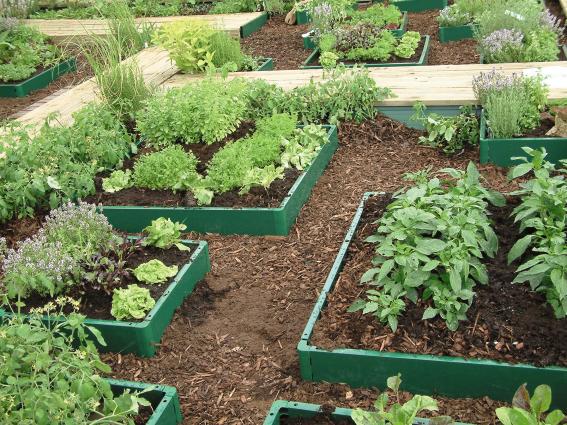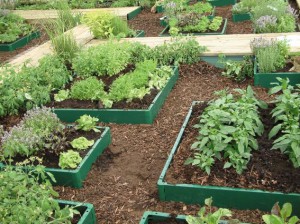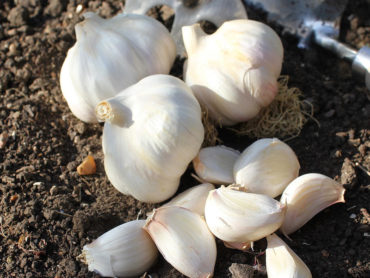

There are lots of benefits to raised bed gardening. If you don’t have space for a traditional vegetable plot, raised beds allow you to grow more in a confined space. Raised beds are easy to cultivate without having to tread on the soil, so the ground won’t become compacted, and if you buy three or four they make organising crop rotation a doddle. But perhaps their greatest asset is that they allow you to grow plants in otherwise unfavourable growing conditions. So if your soil is naturally shallow, poorly drained or just poor quality, raised beds could be the answer. However, do remember that you’ll have to fill up the beds with good-quality soil, or a mix of soil and garden compost.
Of course, you can make your own raised beds from just about anything, but, for those short of time or not gifted with DIY skills, there are a number of ready-made kits in the shops. Along with traditional wooden raised beds, plastic, metal or willow versions are also available.
Plastic and metal ones have the advantage of not rotting, and plastic ones are available in a wide range of colours, often using recycled plastic. Choose one that is no wider than 1.2m, however, as you will want to be able to reach the middle without treading on the soil and compacting it.
Don’t be afraid to sow or plant crops closer in raised beds, but don’t go too close, otherwise you may end up with poor-quality veg or lots of small roots. However, closely spaced plants will be competing for water, so if you can’t water them regularly for whatever reason, stick to traditional spacing.
Top up your raised bed with new topsoil or organic matter such as garden compost each spring as the soil level will naturally drop. Slugs and snails sometimes like to hide in the frame so keep a watchful eye out for them.
For more advice on how to use a raised bed in your garden, watch our informative video below.




